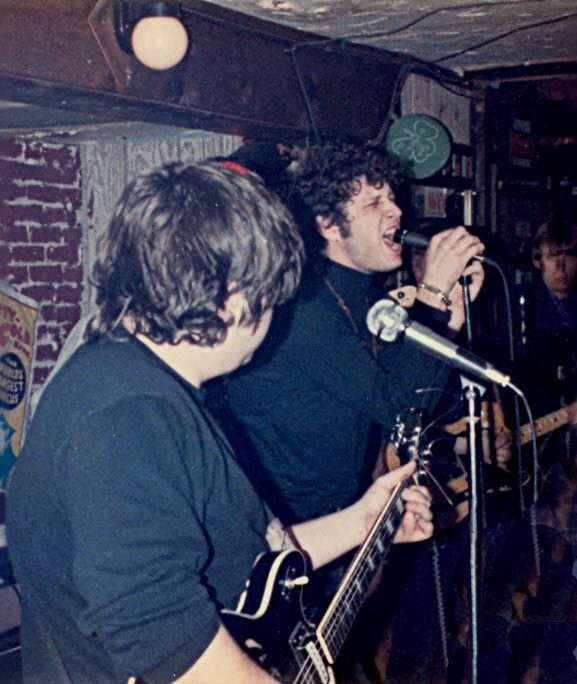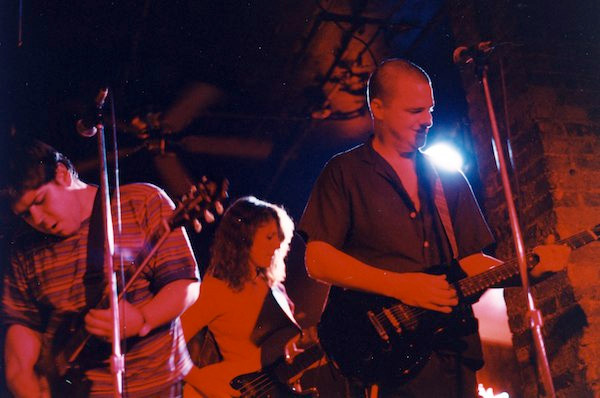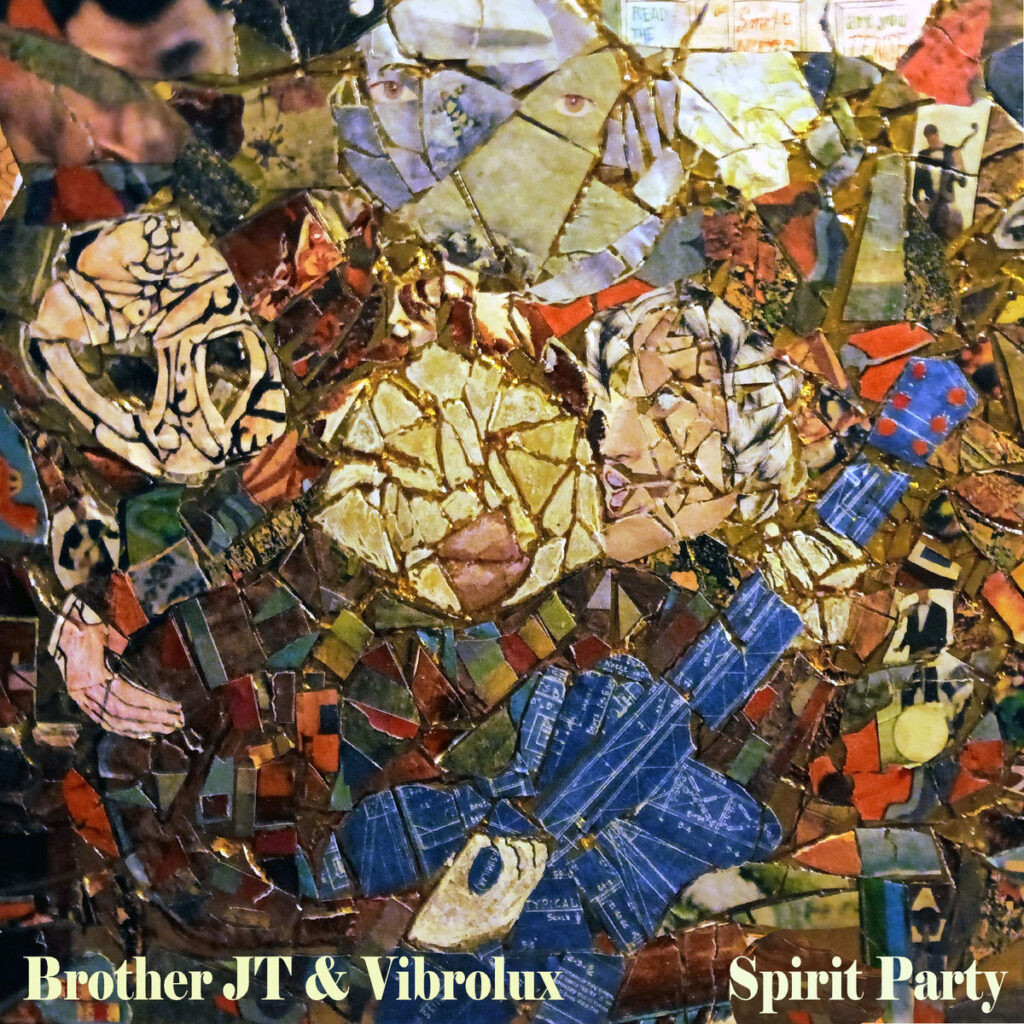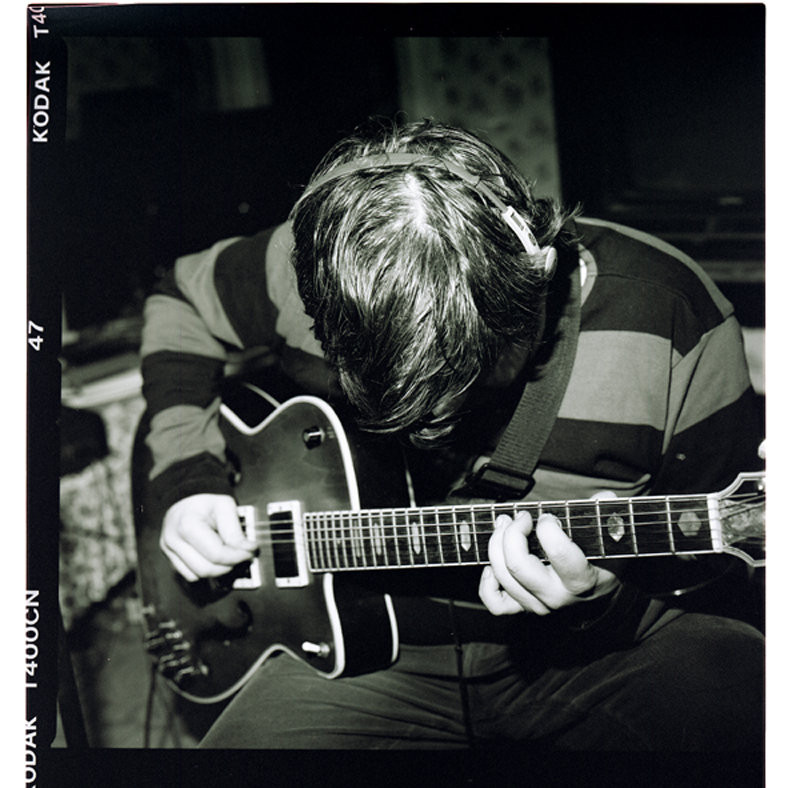John Terlesky stands as a singular figure in the rock music landscape, an artist who thrives in the fertile ground where DIY spirit and boundless creativity converge. From the raw, electrifying energy of Suffacox to the experimental psychedelic blues of Brother JT, and the fuzz-drenched sonic explorations of Vibrolux, Terlesky’s musical journey has consistently defied convention, embracing a thrillingly unpredictable edge. A true veteran of the underground scene, he has shared stages with luminaries such as Bardo Pond and Royal Trux, embodying the spirit of a musician equally at home crafting a spontaneous album like ‘Fuzzface’ as he is immersing himself in the expansive, hallucinatory soundscapes of Brother JT. His recent ‘Spirit Party’ reunion project underscores a fundamental truth about John Terlesky: he remains dedicated to the unscripted, electrifying moments that define true artistic expression.
 The Original Sins | Copyright: Discogs.com
The Original Sins | Copyright: Discogs.com
Early Seeds of Sound: John Terlesky’s Formative Years
Reflecting on his upbringing, John Terlesky shares his roots in Easton, Pennsylvania, a town with a subtle connection to the past, mentioning its rumored association with Dutch Schultz in the 1930s. Born in 1962, Terlesky’s early musical imprinting came from his older brother’s Beatles records, which he initially perceived as the only band in existence. He recalls the formative experience of his brother’s band practices at home, where, at just eight years old, he was invited to sing ‘House of the Rising Sun’ for amusement. This seemingly lighthearted moment instilled in him a lasting impression of the naturalness of performance. Crucially, his brother introduced him to barre chords on the guitar, unlocking simple song structures and igniting his own musical exploration. The later discovery of punk rock, particularly The Ramones, further solidified his path, presenting music as an accessible form of social engagement, a motivation that John Terlesky admits still resonates with him.
Finding His Scene: From The Creatures to The Original Sins
John Terlesky’s deeper immersion into the music world began around the age of 21. A pivotal moment arrived with a sign in a local record store seeking a guitarist for a 60s garage band. This led him to The Creatures, where he connected with future Original Sins bandmates, drummer Dave Ferrara and bassist Ken Bussiere. During this period, Terlesky’s songwriting began to flourish, initially for The Creatures, but increasingly for his own evolving musical ideas which felt beyond the confines of the garage genre. This creative divergence prompted him to branch out and form The Original Sins, adding organist Dan McKinney to the lineup. A fortunate connection through a friend, Steve Morrow, whose brother Glenn was launching Bar None Records in Hoboken, proved to be the catalyst for their breakthrough. A demo tape sent to Glenn Morrow resonated, setting the stage for The Original Sins’ journey.
A Teenage Room’s Echoes: Musical Artifacts and Influences
When asked about the artifacts that might have adorned his teenage room, John Terlesky mentions inheriting his brother’s space, complete with a Quicksilver Messenger Service poster which he retained. However, he didn’t begin seriously collecting records until later, after moving out. He recalls a significant early purchase: Pink Floyd’s ‘A Nice Pair’ from the Listening Booth. He describes the Syd Barrett-era material as particularly “liberating,” admiring its rule-breaking, inventive spirit.
Early Bands and The Creatures’ Genesis
Clarifying his early band history, John Terlesky recounts his initial foray into band life with Senseless Hate, where he played bass for a handful of gigs covering bands like Mentors and Angry Samoans. This was followed by The Creatures, and then the formation of the seminal Original Sins.
Expanding on The Creatures, John Terlesky describes it as the project where his recorded output began. A recording session in the Poconos yielded approximately 15-20 songs. He acknowledges that his songwriting at this stage was deliberately formulaic, tailored to the garage rock genre, but recognizes this as a crucial learning phase. Reflecting on a reunion with The Creatures around 2000, he found that many of these early songs still held up, validating their developmental purpose.
 The Creatures at Funhouse (April 4, 1986)
The Creatures at Funhouse (April 4, 1986)
Original Sins: Memorable Moments and Studio Evolution
Discussing memorable moments with The Original Sins, John Terlesky recounts the recording of their first three albums at Water Music in Hoboken, with Glenn Morrow producing their debut. He recalls a sense of urgency dictated by studio costs and the impact of recording on 2-inch tape for superior sound quality. In contrast, he expresses a preference for home recordings, where he could refine tracks at his own pace, albeit with a lo-fi aesthetic. He contrasts the early studio experiences as rushed, focused on capturing basic takes rather than nuanced performances, attributing this partly to his youth and inexperience.
The Emergence of Suffacox: A Side Project with Raw Energy
The transition to Suffacox emerged from John Terlesky’s involvement in the Philadelphia music scene during his Brother JT side project. Wayne Hamilton invited him to join Suffacox (initially named Floating Dogs) as a guitarist. John Terlesky embraced the role of a sideman, appreciating the reduced pressure and the opportunity to contribute without the sole responsibility for the project’s direction.
John Terlesky reflects on the raw energy that defined Suffacox’s sound and its peak period. He valued the band as a social outlet, enjoying the camaraderie and the personalities within the group. Wayne Hamilton’s songwriting provided a looser, more improvisational framework compared to The Original Sins. Following Wayne’s passing in 2009, Suffacox reunited for a benefit show around 2016 with Mike Lenert of Caterpillar, and they have continued to perform occasionally, driven by their shared enjoyment of playing together and revisiting their classic songs.
 Suffacox | Copyright: Discogs.com
Suffacox | Copyright: Discogs.com
Standout Tracks and Hawkwind Inspiration
When asked about standout tracks, John Terlesky highlights Suffacox’s rendition of ‘Orgone Accumulator’ by Hawkwind. He appreciated its unpredictable, freeform nature, often dictated by drummer Lou Cooper’s stamina. He notes the valuable lessons learned from these improvisational explorations. He recounts a pivotal experience for The Sins in Berlin around 1991, sharing a venue with Hawkwind. Witnessing Hawkwind’s performance profoundly influenced him, inspiring the more jam-oriented approach of Brother JT. He humorously suggests that the simplicity of two-chord songs was conducive to playing even under the influence.
Collaborative Synergy and Musical Companions
Reflecting on collaborations, John Terlesky acknowledges his fortune in playing with highly skilled musicians throughout his career. He expresses gratitude for their contributions to the live success of his songs, even when he primarily provided the lyrics and chords. He particularly emphasizes the crucial role of drummers – Dave Ferrara, Seth Baer, Lou Cooper, and Jamie Knerr – whom he likens to catchers in baseball, the driving force behind the band, both musically and logistically.
Punk, Garage Rock, and the DIY Ethos
John Terlesky discusses the profound influence of punk and garage rock’s rebellious, DIY ethos on his work. Hearing the Velvet Underground was a revelation, making music seem accessible and demystified, emphasizing raw expression over technical proficiency. While acknowledging the desire to expand his musical palette over time, he has consciously aimed to retain an amateur spirit and raw edges in his music, aligning with his self-professed “lazy” nature and preference for directness.
Venues and Shared Stages: Navigating the Music Scene
In the early days of The Original Sins, John Terlesky recounts opening for iconic bands such as The Ramones, The Replacements, Buzzcocks, Screaming Trees, Social Distortion, Butthole Surfers, and even The Kinks at the Tower Theater. However, he expresses a preference for smaller venues like the Khyber Pass in Philly and the Funhouse in Bethlehem, PA, where the intimate setting fostered direct interaction with the audience.
Gear Talk: Instruments and Sonic Tools
Discussing his gear, John Terlesky lists a Fender Vibrolux amp, Sovtek Big Muff fuzz, Halifax wah-wah, and a series of guitars, with a Guild S-100 as a favorite from his earlier days. His current setup includes a Gretsch guitar and a Marshall combo amp, retaining the core pedal setup.
Project Deep Dive: Fuzzface, Brother JT & Vibrolux
John Terlesky elaborates on his various projects, starting with Fuzzface, a one-off album for Dog Meat Records. He describes it as a precursor to Brother JT, an intentionally primitive side project with rotating musicians. Brother JT emerged from a desire to explore more experimental, psychedelic material, coinciding with a perceived decline in audience reception for The Original Sins’ high-energy style. Initially a solo endeavor, Brother JT evolved into a live band with musicians from Philadelphia, including Wayne Hamilton, Art Difuria, John Boothman, and Simon Nagle, among others, under the moniker Brother JT and Vibrolux. This iteration toured with Bardo Pond, Makeup/Royal Trux, and Bevis Frond. After The Original Sins disbanded in 1999, John Terlesky continued with Brother JT, collaborating with local musicians.
He recently released a Brother JT/Vibrolux reunion album, ‘Spirit Party,’ created remotely through file sharing. It is available on platforms like Bandcamp, Spotify, and the Brother JT website.
 Spirit Party – Brother JT
Spirit Party – Brother JT
Brother JT3: Solo vs. Band Projects
John Terlesky clarifies the Brother JT3 designation, explaining that the “3” was added to differentiate band-oriented recordings from solo records. Under this name, they released four albums on Drag City. More recent band-based releases have been issued simply under the Brother JT name on Thrill Jockey.
He notes that while some know him primarily for The Original Sins (active from 1987 to 1999, with around 10 albums), Brother JT, active from 1992 to the present with nearly 25 albums, represents his more substantial and ongoing musical focus. He muses that the Brother JT material might be a natural evolution of where The Original Sins could have gone.
 Brother JT
Brother JT
Post-Pandemic Creativity: Animated Videos
Since the pandemic, John Terlesky has explored crudely animated videos as a hobby, sharing them on his Brother JT62 Instagram, Facebook page, website, and YouTube. He views this as a creative extension of his music, a way to visually expand on his sonic ideas, and a new creative outlet.
Future Horizons: Embracing the Unknown
Looking ahead, John Terlesky expresses an open approach, focusing on making the most of opportunities as they arise, without rigid future plans.
Reflecting on the Journey: Highlights and Memorable Moments
Considering his musical journey, John Terlesky expresses surprise at his achievements, given his childhood timidity. He highlights the people he has met and learned from as the true highlight, both positive and negative experiences contributing to his growth. He finds satisfaction in having entertained audiences over the years, making the challenges of the music life worthwhile. He emphasizes the “exchange of energy” with the audience as the core value.
He mentions a collection of unreleased songs from about a decade ago that he considers his best work. These songs, he says, emerged fully formed, almost without conscious effort. He has intentionally held them back, waiting for the right time to give them their due.
Recalling a most memorable gig, John Terlesky describes a weeknight Brother JT performance at the Funhouse around 2006. Despite a near-empty bar, and perhaps enhanced by a dose of mushrooms, he experienced a moment of pure, uninhibited performance. He describes letting go of self-consciousness and playing purely for the sake of the music itself, achieving a state of flow and deep satisfaction, regardless of external validation. This remains a benchmark for his performance aspirations.
Final Words: Gratitude and Connection
John Terlesky concludes with thanks for the interest in his work.
Interview conducted by Klemen Breznikar
Brother JT Official Website / Facebook / Instagram / Bandcamp
Brother JT Interview John Terlesky Klemen Breznikar Suffacox The Original Sins
